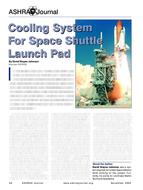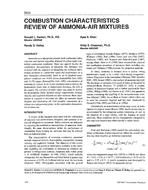An investigation was conducted into HVAC-related airflow rates and noise levels in five classrooms in a mechanicallyventilated building at the University of British Columbia (UBC), the relationship between them, and how to control the noise. Sound-pressure levels were measured in terms of total, A-weighted level, Noise Criteria (NC) and Room Criteria (RC) ratings, and the results compared with established acceptability criteria. Airflow velocities were measured at each ventilation outlet in each classroom and corresponding volume airflow rates determined. The volume airflow data were compared with UBC design standards and specifications in previous balancing records. Comparison of the measured volume airflow rates and noise revealed a direct relationship between the two factors. Classrooms meeting the minimum airflow requirements tended to be excessively noisy. Classrooms with acceptable noise levels tended to have inadequate volume airflow rates. The main source of noise was excessive turbulence over dampers and diffusers, intensified by poor damper placement and high airflow velocities. To make noise levels acceptable, three of the classrooms could have their ventilation systems balanced to lower volume airflow rates to the applicable minimum standard. In addition, face dampers could be replaced by volume extractors; branch takeoffs could be lengthened and their ducts enlarged. Two of the classrooms could have their volume airflow rates increased to comply with the ventilation standards. The results suggest that achieving both acceptable ventilation and noise quality in mechanicallyventilated buildings can be a challenge; they also confirm that environmental factors are not independent, and must be optimized from a multi-disciplinary perspective if high-quality environments are to be achieved for building occupants.
Units: Dual
Citation: ASHRAE Transactions, Vol. 116, pt. 1, Orlando 2010
Product Details
- Published:
- 2010
- Number of Pages:
- 6
- File Size:
- 1 file , 620 KB
- Product Code(s):
- D-OR-10-058


